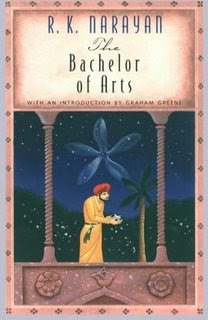Publishing date: March, 2006
Price: Rs 295.00
Classification: Non-Fiction/Memoirs
I must confess that I was a bit bewildered as to why a book like Shooting Water needed to be written, even if it was by Deepa Mehta’s daughter, Devyani. On first glance, it seemed like an attempt to probably piggyback ride on the enormous curiosity generated by Water. Also, I had already read Bapsi Sidhwa’s book, Water – an adaptation of the screenplay. But having gone through it, I will say that this proved to be one of the most engaging reads for me in a long time.
It's ‘selling point’ of course is the whole Water fiasco in Benaras which happened in 1999, when members of the RSS vandalized the shooting, until the whole film was scraped. It’s an episode that Devyani vividly describes and her disgust for the BJP government, which gave her mother so much heartburn, comes across clearly. A particularly interesting episode in the book mentions how Deepa Mehta had a meeting with head of RSS, K S Sudharshan to see if he could intervene and stop its various wings like Vishwa Bharat Parishad etc to back off and let the film’s shooting continue.
Narrating the episode, Devyani writes: Mr Sudarshan sat down and told her (Deepa) not to have any preconceptions about the RSS’s ignorance… “
Why did you make a film like Fire? It’s not what our culture is about,” he said in a calm, measured voice.
‘The Ganga is very precious to us,’ he said.
‘Have you read the script for Water?’ Mom asked.
Mr Sudharshan placed a copy of the script on the table.
‘Where did you get that?’ she asked.
Only one script had been submitted outside of the production, and that was to the Ministry of I&B. Mr Sudharshan replied, ‘After all, whose ministry is it anyway?’
It seems the RSS chief added that the script was good and with some minor changes there would be no more problems. But obviously, Deepa and her crew’s joy was short-lived, as the UP government pulled out support.
The second part of the book looks at how the film was revived again in Sri Lanka. Again, an interesting bit here is about Deepa deciding to change her entire cast this when she revived the project. Devyani talks about how Nandita could not be cast as the young and innocent Kalyani anymore and Shabana was too high profile and the producers didn’t want her in the film.
‘In fact, that was one of their conditions’, she writes in the book. ‘Mom’s decision not to cast Nandita cost them their friendship,’ she says.
While the book is primarily about Water and how it got made inspite of insurmountable problems, there’s a very sensitive, tumultous personal layer that Devyani reveals.
Not able to completely recover from the divorce of her parents and the choice she made (she chose to stay with her father when she was asked who she’s like to live with), Devyani says she found refuge in books and traveling. The coming together of mother and daughter during the shooting of Water was an emotional moment for both of them. Devyani writes about how her mother had probably never forgiven her, so in many ways, the revival of Water, she says, was the renewal of their relationship as well. Whatever issues they may have had, it’s abundantly clear that Devyani is fiercely protective about her mother and that element comes shining across.
I find it particularly interesting the way she defends her mother on the issue of her ‘selling India to the West by choosing controversial themes’
“After 250 years of British rule, it was clear that India still had a love-hate relationship with the West, eating up its pop consumer culture while at the same time pandering to it… all nations indulge in a bit of myth-making to bind their people together. Water was one of the casualties of maintaining that myth’
Quite refreshingly, Devyani makes no attempt to put a show of neutrality while discussing the BJP and the whole Water experience. In fact, she describes a scene when the entire Water team celebrated when BJP lost the election in 2004.
Her tumultuous relationship with her mother aside, one gets a glimpse into Devyani’s inner self when she so movingly describes the intense feeling of love she experienced for a member of the crew. She is besotted with Vikram, a well-read, intelligent, wannashine director and follows him to Mumbai, even though he tells her that he is engaged. These portions are marvelous and it’s touching to see how Devyani manages to be so unflinchingly honest about her emotional lows.
There are also interesting bits about her interaction with filmmaker Anurag Kashyap, who was helping Deepa with the Hindi version of the script. Devyani, being just 19 then, Kashyap instantly gave her an affectionate handle ‘Chutku’ which stuck on for some time.
All of the parts and characters mentioned above make Shooting Water a tantalizingly interesting read. However, I would not say that about the whole book.
A self confessed perfectionist, Devyani gets into tedious details of inconsequential events. This is done almost naively, presuming the reader would be interested in gathering every tid-bit about the production of Water. I found myself sifting through most of these pages. The second part of the book is especially lackluster with an excess of these particulars.
All in all, I liked Devyani’s earnestness that comes across clearly through her narrations. Also, there’s no doubt that she is a wonderfully gifted and sensitive writer. Shooting Water will hopefully not be the last we will hear from this talented author.
-Sandhya Iyer
 Author: Vikram Seth
Author: Vikram Seth 














